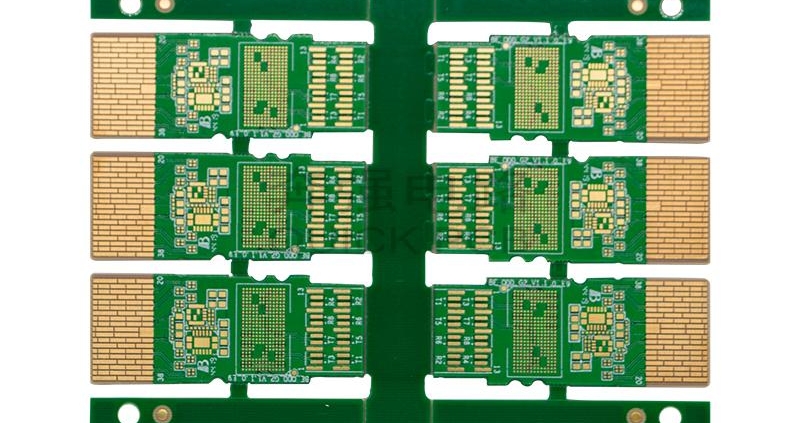Several types of glue are commonly used for circuit boards. How many do you know?
1. Red glue
Red glue is a polyolefin compound that easily solidifies when heated. When the temperature reaches the freezing point of 150°C, red glue begins to change from a paste to a solid. This characteristic can be used for dispensing or printing. To fix the chip components, the circuit board components can be heated and cured through oven or reflow soldering using SMD red glue.
The components on the circuit board, especially the double-sided mounted circuit board, are fixed with SMD red glue during wave soldering, so that the small SMD components on the back will not fall into the tin furnace. Red glue has several major features:
① Stable adhesion strength can be obtained for various chip components;
② It has viscosity and thixotropy suitable for screen printing needs, and the amount of glue is stable without leakage or tower edges;
③Has good storage stability;
④ It has high adhesive strength and can avoid component misalignment during high-speed placement.
Main function: The main function of red glue is to fix circuit board patch components, mainly for bonding, or used together with solder paste for reinforcing fixation.
2. Yellow gum
Yellow glue used in circuit boards is a water-based adhesive with a pungent odor. It is a soft self-adhesive gel that has excellent insulation, moisture-proof, shock-proof and thermal conductivity properties, making electronic components The device operates safely under harsh conditions.
It is prone to curing, and the curing speed is related to the ambient temperature, humidity and wind speed: the higher the temperature, the lower the humidity, the greater the wind speed, the faster the curing speed, and vice versa. When the painted parts are placed in the air, skin will slowly form. Please note that the operation should be completed before the surface forms skin.
Main functions: Fixing electronic products such as inductors, coils, transformers, electrolytic capacitors, receivers, etc. It has the function of protecting and sealing electronic components. It can be used for potting of electrical components, potting of high-voltage components, moisture-proof coating of circuit boards, etc.
3. Thermal conductive silicone
Thermal conductive silicone, also known as thermal paste and heat dissipation paste, is a highly thermally conductive insulating silicone material. Unlike thermal conductive silicone grease, which almost never solidifies, it can also maintain the grease during use for a long time at temperatures of -50°C to +250°C. state. It has both excellent electrical insulation and thermal conductivity, low oil dissociation (trends to zero), high and low temperature resistance, water resistance, ozone resistance, and weather aging resistance. It is characterized by being non-toxic, odorless and non-corrosive, compliant with ROHS standards and related environmental protection requirements, and has stable chemical and physical properties.
Main function: used to fill the gap between the heating element and the heat dissipation device, increase their contact area, thereby achieving the best thermal conductivity effect, so that the heat of the electronic components can be effectively dissipated and transferred when the electronic components are working.
It is widely coated on the contact surface between the heating element (power tube, thyristor, electric heating pile, etc.) and the heat dissipation facilities (heat sink, heat strip, shell, etc.) in various electronic products and electrical equipment to initiate heat transfer. The media function can improve the heat dissipation effect.
4. Silicone glue
Silicone glue is an ointment-like material that solidifies into a tough, rubber-like solid once exposed to moisture in the air. Silicone glue is commonly known as glass glue because it is often used for bonding and sealing glass. The glue should be stored sealed. The mixed rubber should be used up at one time to avoid waste.
Main function: widely used in electronic modules, sensors, electronic components and other occasions that require encapsulation, insulation, flame retardancy, as well as bonding of electronic components and insulation between fixed components.
5. Hot melt adhesive
Hot melt adhesive strip is a solid adhesive made of ethylene-vinyl acetate polymer (EVA) as the main material, modified rosin resin or petroleum resin and other ingredients. It is a plastic, non-toxic, tasteless, green and environmentally friendly adhesive. Adhesive, the physical state of hot melt adhesive changes with temperature changes within a certain temperature range, while the chemical properties remain unchanged. It does not contain water or solvent at all, and has the characteristics of fast bonding, high strength, aging resistance, non-toxicity, good thermal stability, and film toughness.
Heat the hot melt adhesive to the usage temperature, use a spray gun or apply it on the adherend. The bonding and shaping work must be completed within the opening time of the glue, and the adherend should be clamped and cooled to normal temperature. Hot melt adhesive is solid at the right temperature, melts into liquid when heated, and is bonded within a few seconds after cooling at room temperature. It can effectively fix electronic components and wiring harnesses.
Main functions: Hot melt adhesive is suitable for fixing electronic components, bonding electronic wiring, and can also be used for bonding other electronic materials. It can even be used to bond handicrafts, packaging cartons, jewelry, handicrafts, wood, textile samples, etc. to each other.



